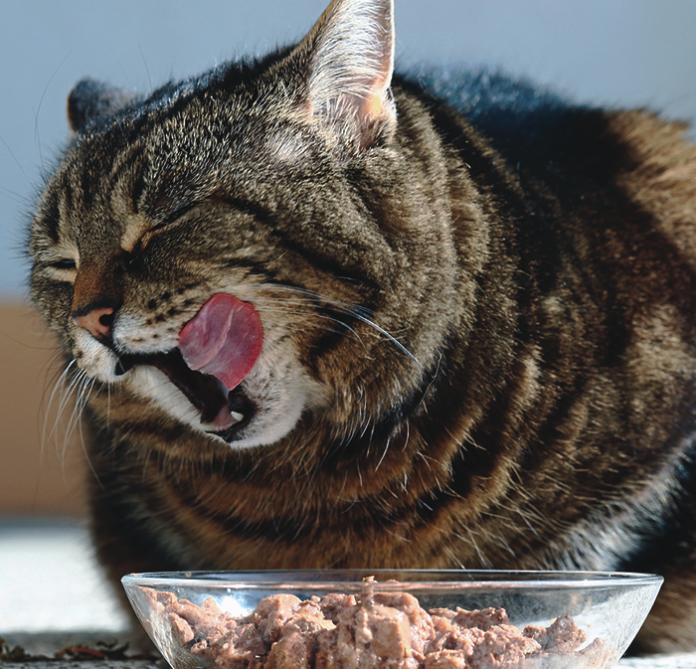Q. In two recent articles, you said the formula for calculating carbohydrate content in wet food was provided to assist diabetic cat owners find appropriate food. When my cat was first diagnosed as diabetic several years ago, I searched the web and learned that determining carbohydrate content on a dry matter basis is complicated and must come from the vendor directly. It seems that this cannot be calculated from the label or even info on the vendor website. Different websites provided different carb percentages for the same food. Can you provide any guidance?
A. Thanks for getting in touch, and I understand your confusion about this topic. The different ways that nutritional information is supplied on cat foods can be hard to understand, so perhaps a brief review of some basic principles would help. It is vital, though, that you consult with your veterinarian, and perhaps a veterinary nutritionist as needed, in making the ultimate decision regarding which food to feed your kitty.
In general, the ideal diet for a diabetic cat should be low in carbohydrates (less than 12% of the energy contained within the food should be in the form of carbohydrates) and moderately high to high in protein (greater than 40% of the energy contained within the food should be in the form of protein). Canned food may be better than dry food (this is debatable), as it contains more water and makes cats feel more full after eating, which can make it less likely that a cat will become overweight (maintaining a healthy body weight is an important aspect of diabetic management). For the same reason, relatively low energy-density food (i.e., weight-loss diets) may help these cats.
To determine the carbohydrate content of cat foods on a dry matter basis for a diabetic cat—or any cat for that matter—you can:
Calculate the dry-matter percentage by subtracting the moisture content from 100%.
Calculate the carbohydrate percentage by subtracting all of the following percentages from 100%: moisture, crude protein, crude fat, crude fiber, and ash.
Calculate the carbohydrate percentage on a dry-matter basis by dividing the carbohydrate percentage by the dry matter percentage and multiplying this number by 100 (to give the result as a percentage).
The carbohydrate percentage on a dry-matter basis should be less than 20 for diabetic cats. There are therapeutic diets that are available through your veterinarian that meet these and other nutritional requirements, but there are also foods available over the counter that do a pretty good job of meeting these dietary recommendations. Please discuss these options with your veterinarian.
Of course, while diet is an important part of managing feline diabetes, control of blood glucose with insulin is also vital in most cases. If you work in close collaboration with your veterinarian, I am sure that you can devise a management plan that will keep your cat happy and healthy in spite of being diagnosed with this common condition.
I hope that this is helpful, and please send us an update when you can.




